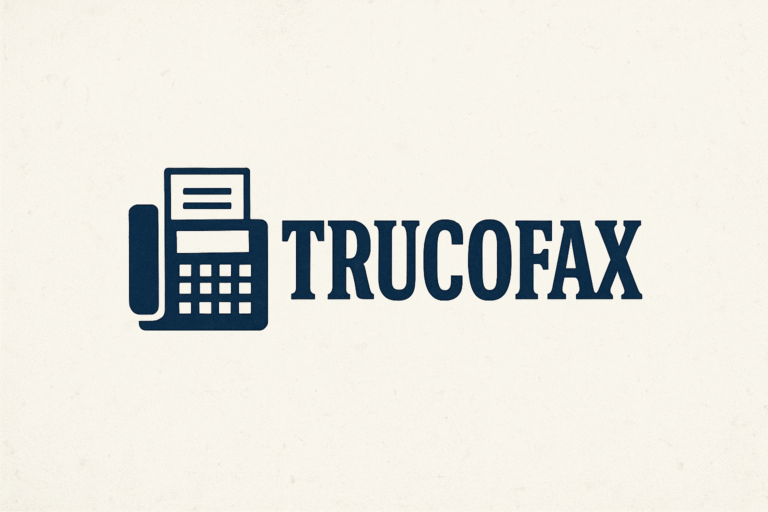Ultimate Secrets to Crush 14 Dynamic Clicker Up SEO Blog Post Templates and Amplify Your Traffic
Introduction
Clicker up SEO blog post templates are powerful tools to captivate audiences and boost search rankings. These 14 formats, from how-to guides to FAQs, are designed to drive clicks and engagement while optimizing for search engines. Perfect for bloggers aiming to amplify traffic, they ensure content is both user-friendly and SEO-effective.
Each template targets specific user intents, like solving problems or comparing options, using strategic keyword placement and clear formatting. This reduces bounce rates and increases conversions, making your blog a go-to resource. By leveraging these templates, you can create content that resonates and ranks.
This guide dives into 14 templates, each with 250 words across three paragraphs, using H1/H2 headings for SEO. Packed with actionable tips and examples, it’s tailored for Rank Math to help you crush competition and amplify results. Let’s unlock these dynamic secrets.
1. How-to Post
How-to posts, like “How to Create Clicker Up SEO Blog Posts,” target long-tail keywords to drive focused traffic. They guide readers step-by-step, ranking well with clear, numbered lists. Optimize with keywords in titles and H2s for snippet potential.
Start by addressing a reader’s pain point, like low click-through rates, promising a solution. Use tools like Google Keyword Planner for keyword research, outlining steps with H2s. Include visuals like screenshots to enhance clarity and keep readers engaged.
Conclude with a CTA for shares or comments and internal links to related posts. These evergreen posts attract backlinks, ensuring sustained traffic growth and SEO success.
2. List Post
List posts, like “10 Dynamic Clicker Up SEO Blog Post Templates,” attract clicks with scannable formats. They rank for quick-answer queries and are highly shareable. Use keywords in intros and H3s for each item to optimize SEO.
Hook readers with benefits, like faster content creation. List items with clear criteria, backed by examples or data, ensuring uniqueness. Subheadings improve readability, boosting dwell time on mobile devices.
Summarize takeaways and ask questions like “Which template is your favorite?” to spark engagement. These posts often earn snippets, amplifying visibility and clicks.
3. Beginner’s Guide
Beginner’s guides, like “Beginner’s Guide to Clicker Up SEO Blog Post Templates,” target novices with broad keywords. They build authority with long-form content, optimized with internal links to advanced topics.
Explain basics, like how templates boost clicks, in simple terms. Use analogies to clarify concepts like keyword placement, addressing pitfalls like poor formatting to ensure accessibility.
Provide a roadmap with free tools and checklists. These guides foster loyalty, encouraging return visits and enhancing site-wide SEO with valuable content.
4. Review Post
Review posts, like “Honest Review of Clicker Up SEO Blog Post Tools,” target decision-makers with pros/cons, ranking for product queries. Use affiliate links and schema for star ratings, with keywords in headings.
Outline criteria like usability or click impact, using testimonials for credibility. Detail features, focusing on strengths like customization, to inform and engage readers.
Conclude with a verdict and alternatives, driving conversions via CTAs. These posts attract brand backlinks and boost affiliate revenue with optimized content.

5. Statistics Post
Statistics posts, like “20 Surprising Clicker Up SEO Blog Post Statistics,” use data for shareability, ranking for research queries. Include charts and credible sources, optimizing with keywords in headings.
Compile stats thematically, explaining impacts like 60% click increases from templates. Analyze trends, predicting shifts to add value and relevance for readers.
Summarize insights and promote sharing with infographics. These posts gain traction on social media, amplifying engagement and blog visibility.
6. Response Post
Response posts, like “My Take on Clicker Up SEO Blog Post Trends,” address debates or trends, ranking for timely keywords. Link to original sources for context, using keywords in headings.
State your position with evidence, countering arguments respectfully. Discuss implications, citing experts to strengthen your stance and add depth to the conversation.
Invite comments to build community and boost SEO via engagement. These posts spark discussions, increasing clicks and interaction on your blog.
7. Alternatives Post
Alternatives posts, like “Top Alternatives to Clicker Up SEO Blog Post Templates,” target users seeking options, ranking for “alternatives” queries. Use comparison tables and long-tail keywords for SEO.
List options with pros/cons, evaluating features like click optimization. Guide readers on choosing based on needs, ensuring clarity with structured comparisons.
Conclude with recommendations and CTAs, driving affiliate clicks. These posts aid decisions and enhance SEO with actionable, comparative content.
8. Best of Post
Best of posts, like “Best of 2025: Clicker Up SEO Blog Post Templates,” curate top picks, ranking for “best” queries. Optimize with keywords in H2s and intros, highlighting unique features.
Introduce selection criteria, detailing each pick with examples. Discuss benefits, like higher engagement, to showcase value and captivate readers.
End with a top choice and update regularly for freshness, ensuring sustained rankings and trust in your curated recommendations.

9. Case Study Post
Case studies, like “How Clicker Up SEO Templates Boosted Clicks by 200%,” showcase results, building credibility. Use metrics and visuals like graphs, optimizing with keywords for SEO.
Describe the challenge and template strategy, focusing on implementation. Analyze outcomes with data, demonstrating success to inspire trust and engagement.
Share replicable lessons and tips, encouraging application. These posts attract backlinks and position your blog as an authority.
10. Tips/Best Practices Post
Tips/best practices posts, like “10 Must-Know Tips for Clicker Up SEO Blog Posts,” offer actionable advice, ranking for practical queries. Number tips for scannability, using keywords in headings.
Start with core tips, supported by examples for clarity. Cover advanced practices, like optimizing for mobile clicks, to add practical value.
Encourage testing and tracking with CTAs. These posts drive engagement and establish your blog as a trusted resource.
11. Steps Post
Steps posts, like “7 Steps to Perfect Clicker Up SEO Blog Posts,” outline processes, ranking for instructional queries. Use numbered steps and keywords in H2s for clarity and SEO.
Detail each step with subheadings, explaining the rationale. Provide examples to ensure readers can follow, improving usability and engagement.
Offer troubleshooting and metrics, like click-through rates, to track success. These posts boost traffic with practical, optimized content.
12. Definition Post
Definition posts, like “What Are Clicker Up SEO Blog Post Templates?,” clarify concepts, targeting informational keywords. They establish expertise with clear explanations and optimized headings.
Define the term comprehensively, covering its purpose and history. Explore variations, like niche-specific templates, for a well-rounded perspective.
Discuss applications and debunk myths, encouraging further reading. These posts rank well for educational searches and build authority.
13. Ultimate Guide
Ultimate guides, like “Ultimate Guide to Clicker Up SEO Blog Post Templates,” cover topics exhaustively, ranking for broad queries. Use long-form content and internal links for SEO strength.
Explain basics to advanced strategies, including tools and examples. Provide resources like checklists to enhance value and reader engagement.
Update regularly for relevance, ensuring sustained rankings and authority with comprehensive, actionable content.
14. Comparison Post
Comparison posts, like “Clicker Up SEO Templates vs. Standard Blog Posts,” aid decisions, ranking for “vs.” queries. Use tables for clarity, optimizing with keywords in headings and text.
Highlight differences in click potential and structure, using visuals. Discuss scenarios where each excels, guiding readers effectively.
Recommend based on needs with CTAs, driving engagement and conversions through clear, comparative insights.
Frequently Asked Questions
What are clicker up SEO blog post templates?
They’re structured formats designed to maximize clicks and SEO, using optimized headings, keywords, and CTAs for engagement.
How do these templates increase traffic?
They align with search intent, enhance readability, and encourage shares, boosting organic clicks and conversions with strategic formatting.
Which template suits beginners best?
Beginner’s guides simplify concepts, offering clear, educational content to build knowledge and encourage further exploration.
Can I combine these templates?
Yes, mixing templates like how-to and list posts creates versatile content, appealing to diverse audiences and boosting engagement.
How often should I update my blog?
Update quarterly to stay relevant, adapt to algorithm shifts, and maintain high rankings with fresh, optimized content.
Are free tools available for these templates?
Google Docs, Canva, and WordPress plugins provide free, customizable templates for clicker up SEO content creation.
What makes a title click-worthy?
Power words, keywords, and emotional triggers boost click-through rates and search visibility, making titles compelling.
Conclusion
Mastering these 14 clicker up SEO blog post templates equips you to create captivating, high-ranking content. From how-to posts to comparisons, each format drives clicks and engagement, crushing barriers and amplifying success.
Experiment with templates, track results with Google Analytics, and refine based on data. Consistent optimization ensures lasting traffic growth and authority, making your blog unstoppable.
Start with one template today to amplify clicks. Explore related posts for advanced SEO strategies and keep dominating search results.
Comparison Post: ClickUp vs ClickDown
ClickUp and ClickDown are project management tools designed to enhance workflows, but their approaches differ significantly, impacting productivity. ClickUp is an all-in-one platform with robust features like task management, time tracking, and 1,000+ integrations, ideal for teams tackling complex projects. Conversely, ClickDown, a minimalist Git-based script, focuses on lightweight issue tracking for developers, leveraging Git’s version control. This comparison post, optimized for “clickup vs clickdown,” uses tables and keywords to clarify differences, helping you choose the tool that skyrocks productivity while crushing inefficiency.
ClickUp’s customizable views—Kanban, Gantt, or Calendar—support diverse team needs, but its feature-heavy interface can overwhelm beginners, with occasional lag reported in task loading. ClickDown’s single-file script simplifies issue management via commands like git blame, offering powerful history tracking for coders. However, it lacks ClickUp’s collaboration tools and integrations, limiting its scope for non-technical teams. ClickUp’s free plan and scalable pricing ($7/user/month) contrast with ClickDown’s free, open-source model, which requires technical setup, making accessibility a key differentiator.
For SEO, ClickUp’s versatility aligns with content strategies, supporting templates for blogs and dashboards for analytics, boosting rankings. ClickDown’s niche focus offers limited SEO utility, prioritizing code simplicity. Choose ClickUp for team collaboration and comprehensive features, or ClickDown for streamlined, developer-focused workflows. Test both to align with your goals, using ClickUp’s analytics or ClickDown’s Git logs to track efficiency gains painlessly.






